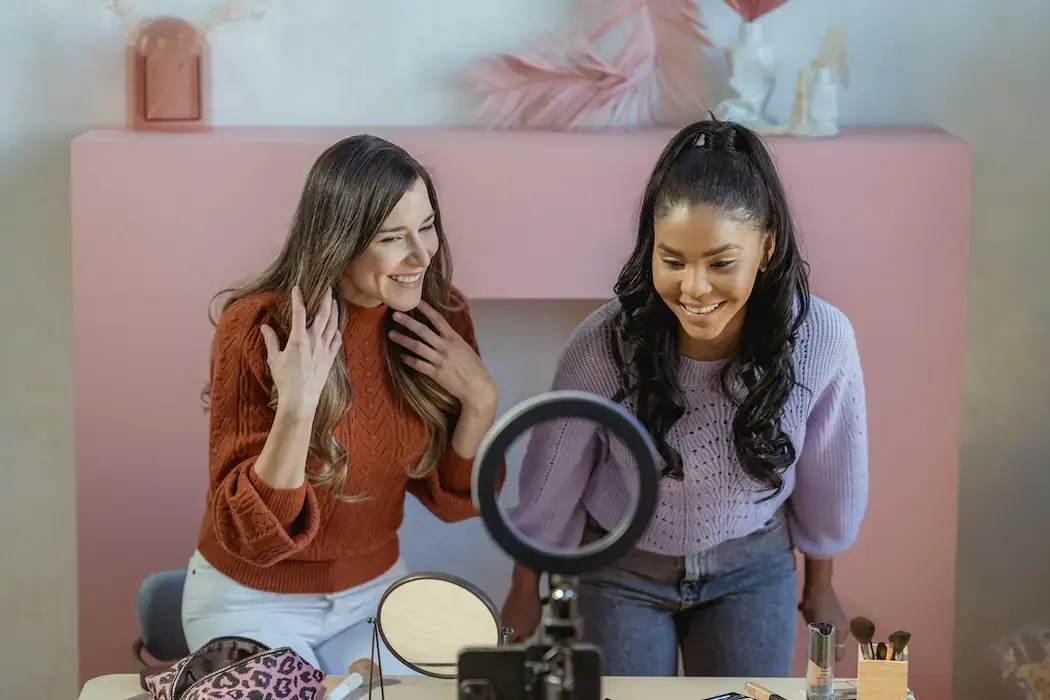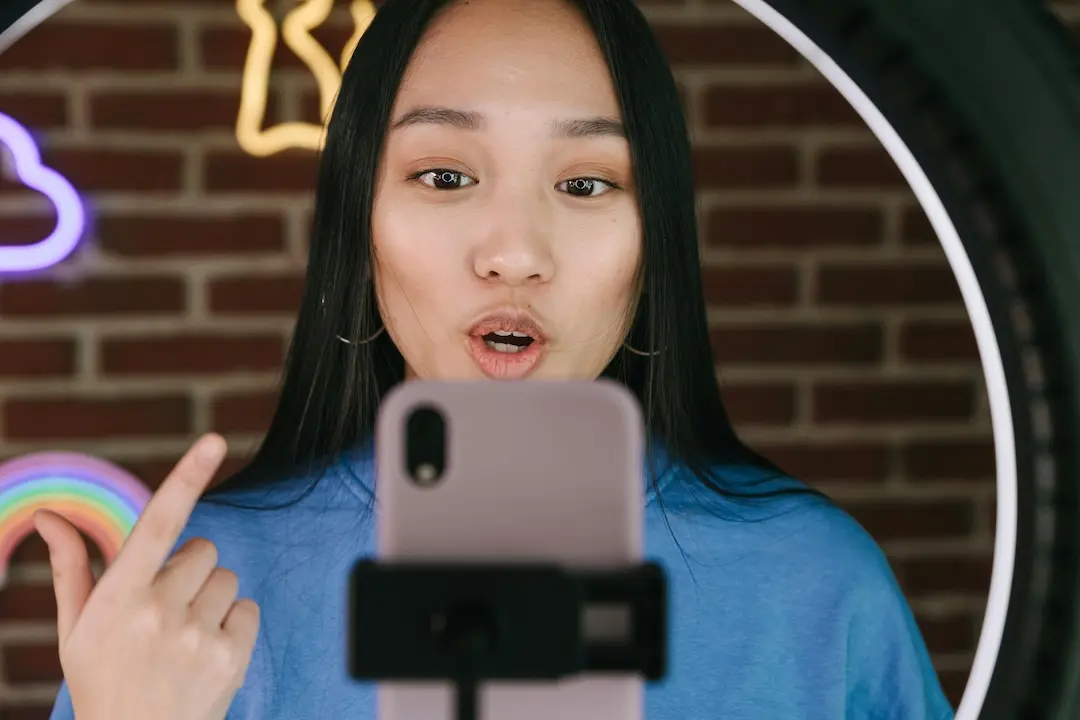
12 Types of Social Media Influencers: Find the Right Influencer for Your Brand
Social media influencers have become a cornerstone of modern marketing, offering brands a unique way to connect with audiences through authentic and relatable content. By leveraging the power of influencer marketing, businesses can tap into loyal, engaged communities to promote their products or services to preexisting groups of engaged followers. With influencers now shaping consumer behavior across every industry, understanding the "types of social media influencers" is more important than ever.
When choosing a partner for your influencer marketing campaign, two key factors come into play: their follower count and the niche they operate in. Follower count can determine reach and engagement potential, while a specific niche ensures alignment with your target audience. In this guide, we’ll explore 12 different types of influencers based on these classifications and share actionable tips to help you find the perfect match for your brand.
What is an Influencer?
A social media influencer is an individual who creates content that resonates with their audience and has the power to influence purchasing decisions. By building trust and authority within their niche, these internet influencers bridge the gap between brands and their followers through relatable and engaging influencer marketing campaigns.
For example, celebrities like Chiara Ferragni, a fashion influencer, has partnered with luxury brands like Dior, while Marques Brownlee, a tech influencer, reviews the latest gadgets and electronics. These influencers’ examples illustrate how expertise, creativity, and authenticity make them invaluable to brands and marketers.
Key characteristics of effective influencers
Effective influencers, while diverse in their specific niches and styles, share several core characteristics that contribute to their success in capturing audience attention and building a loyal following. These characteristics are not merely superficial traits but rather fundamental qualities that underpin their ability to connect with and influence their audience.
Here's a deeper look at these key traits:
Building Trust and Credibility
Trust is the bedrock of any successful influencer-follower relationship. Without it, even the most visually appealing content will fall flat. Followers must perceive the influencer as a credible source of information, advice, or entertainment. This credibility is earned over time through consistent delivery of valuable, honest, and authentic content. Transparency is also crucial; influencers who openly disclose sponsored content or partnerships maintain trust by demonstrating integrity. This can involve citing reliable sources, admitting limitations in expertise, and engaging in open and honest communication with their audience. This trust translates directly into influence, as followers are more likely to heed recommendations from someone they perceive as trustworthy.
Producing High-Quality, Creative, and Engaging Content
As social media platforms are so crowded with content, high-quality content is not a luxury for influencers—it's a necessity. Successful influencers are skilled content creators who consistently produce engaging, original, and visually appealing material. This content can take many forms, including informative blog posts, captivating videos, stunning photographs, entertaining stories, or insightful podcasts.

What sets effective influencers apart is their ability to tailor their content to their specific audience, understanding their preferences and delivering content that resonates with them. This consistent delivery of high-quality content keeps the audience engaged, fosters a sense of anticipation for future content, and ultimately strengthens the influencer's position as a thought leader or trusted source within their niche. This also involves staying up-to-date with current trends and adapting content formats to maintain audience interest.
Engaging with Followers in a Meaningful Way
Unlike traditional media, social media facilitates two-way communication. Effective influencers capitalize on this by actively engaging with their followers. This goes beyond simply responding to comments; it involves fostering a genuine sense of community. This can include hosting live Q&A sessions, running polls and surveys, responding to direct messages, participating in relevant online conversations, and creating opportunities for followers to interact with each other. This active engagement strengthens the bond between the influencer and their audience, transforming followers into loyal fans and advocates. The sense of community is a powerful driver of influence, as followers are more likely to be influenced by someone they feel a personal connection with.
In essence, successful influencers are more than just popular and influential individuals online; they are trusted authorities, creative storytellers, and community builders. Their ability to combine these qualities allows them to effectively connect brands with their target audiences by deploying endorsements in a way that resonates deeply and ultimately drives sales.
How Influencer Marketing Has Changed the Game

Influencer marketing has fundamentally reshaped the advertising landscape, offering brands a more resonant and efficient way to connect with target audiences compared to traditional methods. While conventional advertising often struggles to cut through the noise, influencer marketing leverages the established trust and engagement that influencers have cultivated with their followers. This translates to significantly higher returns; studies have shown that influencer marketing can deliver up to 11 times higher ROI than other forms of digital marketing, a compelling statistic that underscores its dominance in the current marketing ecosystem.
Here's a deeper look at the key benefits content creators bring to modern marketing:
Highly Targeted Marketing Campaigns
Instead of casting a wide net with generic advertising, brands can strategically partner with influencers whose audience demographics, interests, and values closely align with their target market. This laser-focused approach ensures that marketing messages reach the most receptive and relevant consumers, minimizing wasted ad spend and maximizing impact. For example, a sustainable clothing brand might collaborate with an eco-conscious lifestyle influencer, reaching an audience already predisposed to valuing ethical and environmentally friendly products.
Authentic and Relatable Endorsements
In a world saturated with polished advertisements, consumers increasingly crave authenticity. Influencer content, often presented in a natural, conversational style, resonates more deeply because it feels less like a traditional ad and more like a trusted recommendation from a friend. This genuine connection fosters stronger relationships with potential customers, building trust and credibility that are difficult to replicate with traditional advertising. This authenticity can manifest in various forms, from genuine product reviews and personal testimonials to behind-the-scenes glimpses into the influencer's life.
Enhanced Engagement and Community Building
Unlike one-way communication channels like television or print ads, social media influencers facilitate two-way dialogue with their audience. They actively engage with comments, answer questions, and foster a sense of community. This interactive approach leads to significantly higher engagement rates, including likes, shares, comments, and direct messages, which are crucial metrics for measuring campaign effectiveness. This active engagement also provides valuable feedback for brands, allowing them to gain insights into consumer preferences and tailor future campaigns accordingly. This can also lead to user-generated content, further amplifying the campaign's reach.
This paradigm shift has rendered influencer marketing not just a valuable tool, but an indispensable strategy for brands seeking to enhance visibility in a crowded marketplace, cultivate genuine trust with their target demographic, and ultimately drive tangible sales growth. By tapping into the power of influence, brands can achieve marketing outcomes that were previously unattainable through traditional methods.
Importance of Social Media Platforms in Influencer Marketing
Social media platforms play a vital role in shaping the success of influencer marketing campaigns. Each platform has its own unique ecosystem, catering to different demographics and content formats. Let’s explore how major platforms influence the impact of internet influencers:
-
Instagram: Known for its visual content, Instagram is ideal for influencers in fashion, beauty, and travel. Its Stories feature allows for authentic, behind-the-scenes content.
-
TikTok: With short, engaging videos, TikTok is a hub for viral trends and younger audiences. TikTok creators often excel in entertainment and lifestyle niches.
-
YouTube: Perfect for long-form content like tutorials and reviews, YouTube influencers thrive in industries such as tech, gaming, and fitness.
-
Facebook: Offering a mix of video, photo, and text content, Facebook is effective for reaching older demographics and community-driven niches.
-
X: Great for real-time updates and thought leadership, influencers on X are often found in tech, news, and entertainment.
By aligning your campaign with the right platform, you can maximize reach and engagement.
Types of Influencers by Follower Count
Influencers are often categorized by the size of their following, which can determine the scale and nature of their impact. Here’s a breakdown of influencer levels and how they fit into marketing strategies:
1. Nano-influencers (1K-10K)
Nano-influencers have small but highly engaged audiences. They are often seen as authentic and relatable, making them ideal for niche influencer marketing campaigns. For example, a local coffee shop could partner with a nano-influencer to promote new menu items, benefiting from the influencer’s close connection with their small but loyal followers.
-
Pros: High trust, low cost.
-
Cons: Limited reach.
2. Micro-influencers (10K-100K)
Micro-influencers offer a balance between reach and engagement. They are known for their expertise in specific niches, such as fitness or beauty. A skincare brand, for instance, might collaborate with a micro-influencer to highlight a new product line, leveraging their authority within the beauty community.
-
Pros: Strong audience connection, cost-effective.
-
Cons: Micro influencers have a moderate reach compared to larger influencers.
3. Macro-influencers (100K-1M)
Macro-influencers cater to a broader audience while maintaining a personal connection. Their polished content appeals to brands seeking professional influencer marketing campaigns. A tech company launching a new gadget might work with a macro-influencer who reviews electronics, reaching a larger, tech-savvy audience.
-
Pros: Broad reach, professional content.
-
Cons: Higher costs.
4. Mega-influencers (1M+)
Mega-influencers, often celebrities, have global audiences and unmatched visibility. They are perfect for large-scale campaigns. For instance, a luxury fashion brand might collaborate with a mega-influencer to launch an exclusive collection, ensuring high visibility and prestige.
-
Pros: Massive reach, cultural influence.
-
Cons: High costs, lower engagement rates.
Types of Influencers by Industry/Niche

Social media influencers are not a monolithic group; they vary significantly based on their area of expertise, or niche. This specialization allows them to cultivate highly engaged audiences with specific interests. Partnering with the right niche influencer is crucial for brands seeking to reach a targeted demographic. Here are some of the most popular and impactful niches:
5. Fashion
Fashion influencers are tastemakers who set trends through outfit inspiration, style guides, and collaborations with fashion brands. They possess a keen eye for aesthetics and a deep understanding of current trends. A clothing brand launching a new seasonal collection could partner with a fashion influencer to showcase their styles through creative posts, engaging videos (like "get ready with me" or styling sessions), and high-quality photography, effectively demonstrating the versatility and appeal of their clothing line to a fashion-conscious audience. This could also involve exclusive discount codes or early access to collections for the influencer's followers, further incentivizing engagement.
6. Beauty
Beauty influencers are experts in makeup artistry, skincare routines, and product reviews. They often possess in-depth knowledge of ingredients, application techniques, and product efficacy. A cosmetics company might engage a beauty influencer to promote a new lipstick line through detailed tutorials, wear tests demonstrating longevity and color payoff, and before-and-after comparisons. This could involve creating specific makeup looks using the product, offering application tips, and addressing common consumer questions.
7. Fitness
Fitness influencers are advocates for healthy living, sharing workout routines, nutrition tips, motivational content, and lifestyle advice. They often possess certifications or extensive personal experience in fitness. A gym equipment brand could partner with a fitness influencer to demonstrate the functionality and benefits of their products through engaging workout videos, product demonstrations, and educational content on proper form and technique. This could also include creating workout programs using the equipment or hosting online fitness challenges.
8. Tech
Tech influencers are knowledgeable about gadgets, software, emerging technologies, and industry innovations, often targeting tech-savvy audiences. A smartphone manufacturer might work with a tech influencer to create an in-depth review highlighting key features, conducting performance tests, comparing it to competitor products, and offering insights into the latest technological advancements. This could involve unboxing videos, camera tests, and detailed explanations of technical specifications.
9. Travel
Travel influencers inspire wanderlust by showcasing breathtaking destinations, luxurious hotels, unique travel experiences, and practical travel tips. A brand launching an adventure backpack could collaborate with a travel influencer to demonstrate its durability, practicality, and features in various real-world settings, such as hiking trails, bustling cities, or remote landscapes. This could involve showcasing packing techniques, highlighting the backpack's features, and documenting the influencer's travel adventures.
10. Gaming
Gaming influencers build communities within the gaming world by streaming gameplay, reviewing new releases, providing commentary, and engaging with their viewers. A video game publisher might team up with a gaming influencer to promote a new release through live streams, gameplay walkthroughs, in-depth reviews, and interactive Q&A sessions with their audience. This could also involve exclusive in-game content or early access for the influencer's followers.
11. Food
Food influencers cater to culinary enthusiasts by sharing delicious recipes, restaurant reviews, stunning food photography, and cooking tips. A kitchen appliance brand could collaborate with a food influencer to highlight the versatility and functionality of their products in engaging recipe videos, cooking demonstrations, and visually appealing food photography. This could involve creating unique recipes using the appliance or hosting online cooking classes.
12. Parenting
Parenting influencers offer practical advice, relatable stories, product recommendations, and support for families navigating the challenges and joys of parenthood. A baby product brand might partner with a parenting influencer to showcase the practicality, safety, and benefits of their items through product reviews, demonstrations, and real-life scenarios. This could involve showcasing how the product fits into a typical family routine or addressing common parenting concerns.
By aligning your brand with the right niche, you can create campaigns that resonate deeply with your audience.
Find the Best Influencer For Your Brand with Collabstr
Collabstr simplifies the process of finding and managing influencers. With powerful search filters, campaign management tools, and analytics tracking, brands can easily connect with influencers who match their goals.
Check out Collabstr’s features to streamline your influencer marketing efforts and achieve impactful results.
Frequently Asked Questions
What Are the 4 Main Categories of Social Media Influencers?
The four main categories are nano-influencers, micro-influencers, macro-influencers, and mega-influencers, based on follower count.
What Are the Levels of TikTok Influencers?
TikTok influencers range from nano-influencers to mega-influencers, with engagement often playing a bigger role than follower count.
What Is a Tier 3 Influencer?
The term "Tier 3 influencer" is not universally standardized but generally refers to macro-influencers. These individuals have a substantial following, typically ranging from 50,000 to 1 million followers, but they are not at the celebrity level of mega-influencers. They often have a strong presence within a specific niche and are valuable for brands with influencer marketing campaigns looking to reach a large but targeted audience. The tier system is not strictly defined, and variations exist, but the core idea is to differentiate influencers based on their reach and influence.
What is the difference between reach and engagement?
-
Reach refers to the total number of people who have potentially seen a piece of content on social media. It's a measure of potential audience size. For example, if an influencer has 100,000 followers, their potential reach is 100,000.
-
Engagement measures how actively involved the audience is with the content. This includes metrics like likes, comments, shares, saves, and clicks. High engagement indicates that the content resonates with the audience and that they are actively interacting with it. For example, if an influencer's post receives 5,000 likes and 500 comments, their engagement is considered relatively high. Reach is about potential viewership, while engagement is about actual interaction.
How do brands choose the right tier for their influencer marketing campaigns?
Brands should consider several factors when selecting an influencer tier:
-
Campaign goals: Are you aiming for broad brand awareness (mega-influencers), targeted reach within a niche (micro or macro-influencers), or high engagement within a small community (nano-influencers)?
-
Budget: Collaborating with mega-influencers is significantly more expensive than working with nano or micro-influencers.
-
Target audience: Which influencer tier best aligns with your target audience's demographics, interests, and online behavior?
-
Desired level of engagement: Nano and micro-influencers typically have higher engagement rates, while macro and mega-influencers offer greater reach on social media.









